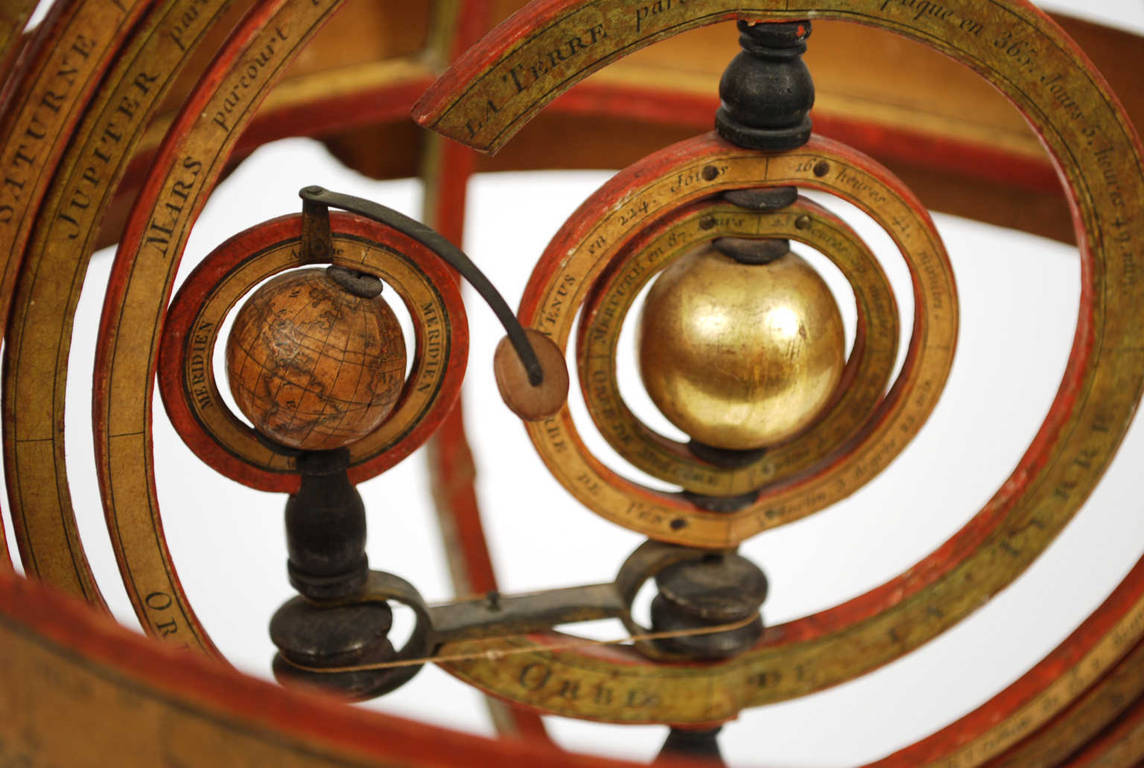antik.it/Nautical-antiques/8248a-Antique-Sextant/
Code 8248a
EUR 1800.00
In stock
1763651017Code 8248a Antique SextantBrass sextant signed Eigens Fabrikat 1126, German manufacture from the second half of the 19th century, housed in its original mahogany box with brass handle, hinges, and clasps. It features a silver lip and vernier, a rosewood handle, three colored glasses for the fixed mirror and four for the movable mirror, two telescopes, one filter, a vernier graduated from 0 to 130°, and an index and horizon mirror.
Box dimensions: 27 x 26.5 x 13 cm – 10.6 x 1.4 x 5.2 in.
Condition: Good, functional, and complete with a custom-made wooden and brass base.
The inscription "Eigenes Fabrikat," engraved on some late 19th-century German sextants, does not identify a specific manufacturer, but literally means "own production." This formula was used by artisan workshops or small machine shops in the German-speaking area that produced nautical instruments without a structured trademark.
The sextant is an ancient astronomical instrument used to measure the altitude of a celestial body (such as the Sun). The instrument is placed on a vertical plane and, looking through the sighting device, the horizon line visible through the unsilvered half of the fixed mirror is sighted. By moving the alidade, with which the mirror is attached,
the light rays emanating from the celestial body are reflected by the movable mirror and the silvered half of the fixed mirror. Looking through the sighting device, the image of the celestial body, obtained by double reflection, appears to coincide with the horizon line. The altitude of the celestial body is expressed by the angle, the value of which is read on the graduated scale. The filter is used when the celestial body being sighted is the Sun.
Sir Isaac Newton invented the principle of double reflection in navigational instruments, but his research was never published. Subsequently, two men, independently of each other, discovered the sextant around 1730: John Hadley (1682-1744), an English mathematician, and Thomas Godfrey (1704-1749), an American inventor. But it was not until 1758 that Admiral John Campbell conducted a series of trials on the open sea to test a new method that relied on the lunar distance as a means of calculating longitude. This is how the sextant was developed. Initially made of brass, their scales were divided with great precision by mathematicians who made scientific instruments.
FAQ
Do you provide an authenticity certificate/expertise?
Of course! The legislative decree n. 42/2004 stipulates that who sells works of art or historical and archaeological items has the obligation to deliver to the purchaser the documents attesting to the authenticity of the object, or at least to submit the documents relating to the probable attribution and origin. Antik Arte & Scienza provides an expertise (as warranty) that contains a description, period and assignment or the author, if known, of the item.
How can I pay?
Secure payments by PayPal, credit card or bank transfer.
What are the shipping terms and the delivery schedule?
Shipping by DHL or UPS is free (but if we are shipping to a country non-EU remember that any taxes and customs duties are on your expense), and items will be sent just after receiving of payment.
Italy: delivering on the average in 24 h.
Europe: delivering on the average in 2/3 weekdays.
Other countries: delivering on the average in 5 weekdays; custom duties charged to the buyer.
Is shipping insured?
Of course! Free insurance by Lloyd's London that covers almost all destinations.
If I change my mind, can I return the item?
Of course! (see our general terms for more information).
e-Shop
Nautical antiques
Code 8248a Antique Sextant
Antik Arte & Scienza sas di Daniela Giorgi - via S. Giovanni sul Muro 10 20121 Milan (MI) Italy - +39 0286461448 - info@antik.it - www.antik.it - Monday-Saturday: 10am-7pm



























